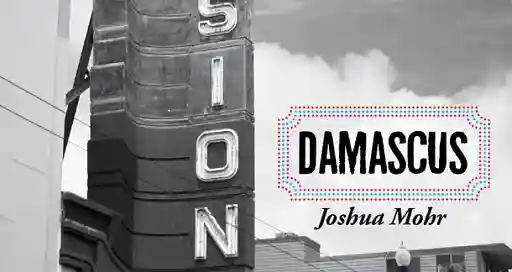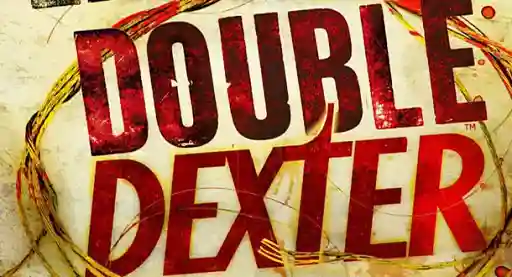Bookshots: Pumping new life into the corpse of the book review
Title:
Triggerman #1
Who wrote it?
Walter Hill, legendary writer/director/producer responsible for The Warriors, 48 Hrs. and the Alien franchise, with pencils by Matz, purveyor of such pulp sequential art as The Black Dahlia and The Killer.
Plot in a Box:
Set during the Prohibition, this first issue of the comic book mini-series follows Roy Nash, a hardboiled con secreted out of prison with a job to do. That job isn’t clear yet, as it first involves taking out a man in Arizona that owes money to “people in Chicago.” Nash picks up wanna-be starlet Rose Malone on his way to Los Angeles, where presumably he has more people to kill.
Invent a new title for this book:
For a Few More Bullets to the Head
Read this if you like(d):
Bonnie and Clyde, Last Man Standing, Public Enemies
Meet the book’s lead(s):
Roy Nash – Two weeks earlier the man was in Joliet Prison in Illinois, with nothing but a picture of his lost love to keep him company. Now he’s back in the world, adorned in pinstripe suit with Tommy Gun in hand. He doesn’t say much, appears to be comfortable in this world of violence, but isn’t made of stone either.
Rose Malone – a free-swinging woman with big dreams, she hitches a ride with Nash on a whim. She’s a dancer and isn’t afraid to use her body to get what she wants, but is simultaneously worldly and naïve. Quite the talker, she may get attached to Nash, even if his reluctance probably means she’ll die horribly somewhere down the line.
Said lead(s) would be portrayed in a movie by:
Roy Nash – He’s a cool one, because this is a purposeful throwback to how men used to be (or how it’s perceived men used to be). Nash isn’t traditionally attractive, at least by modern standards, with his lean frame and rigid features. James Franco could pull off the troubled, weary and snake-like ruthlessness, but doesn’t have a voice that lends itself to gangland dramas.
Rose Malone – Jennifer Lawrence, assuming she’d be willing to do the nudity (half of Rose’s “screentime” in this issue is spent naked, so it’s worth pointing out). That balance of youth and temerity has been conveyed well in the past by Lawrence. She also has a bit of tomboy in her, and a fine balance of knowing she’s sexy but using it more as a tool rather than as a defining part of her personality.
Setting: would you want to live there?
Arizona, 1932. Having lived there in the late ‘80s and early ‘90s I can say that’s a definite no. The idea of that particular wasteland without air conditioning is enough to make me break out into a sweat just thinking about it. Also the fact that there’s no booze to drown your sorrows is a deal breaker.
What was your favorite sentence?
I ain’t no trouble, no sir. Self-defense, way I see it. Never did like the sum-bitch anyhow. Just like when Peter Walker shot Long John Anderson back in eighteen hunnert ninety-two. I was there.
The Verdict:
Difficult to tell so far because this is only a fraction of the final story, but it’s an enjoyable potboiler so far. It certainly feels like Hill’s 1970s work, with hard men being hard men and beautiful women being beautiful women. There’s a simplicity at play that could lead nowhere, but it could also unravel in a deliciously Chinatown-esque way.
Now aside from the setting this isn’t particularly noir-ish, but there’s potential. Generally noir involves a femme fatale and some sort of grand conspiracy getting peeled back from simple beginnings. Nash is certainly not a detective and Rose not a femme fatale, but there is a mystery. For some reason Nash has been let out of prison, and there are hints that higher-ups are exploiting him. The mystery is why was he let out of prison, who is the woman from Nash’s past, and what is he going to do in LA?
Withholding is not the most honest way to string an audience along, but sometimes there are benefits. By going so minimalist, Hill leaves open the possibilities to go anywhere. There’s also a pregnant premise with the Great Depression allowing for commentary on the troubled economy today, and the Prohibition leading to even more decadence.
For now, however, there isn’t a lot to go by. Hill’s influences are clear, from Sergio Leone Westerns to Hammett-style gangsters, but there’s no innovation here. This feels like a story that’s been told with a fatalistic ending: it’s doubtful Nash makes it out alive. It also doesn’t 100% translate to the comic book format, as there’s an attempt at stillness and anticipation that plays more like wasting pages. Almost half the book feels like a silent issue of Larry Hama’s G.I. Joe.
Matz’s art certainly makes for striking still images, but it’s a bit stiff. The illustration is almost photorealistic, but there’s not a lot of sense of movement. Still, there’s a swagger and air of dread that’s palpable. It’s also nice that everyone isn’t drawn like Hollywood movie stars. Rose has curves, and Nash is worn taut.
In the end, a solid read with many avenues to go down. Let’s hope it fulfills the promise.

About the author
A professor once told Bart Bishop that all literature is about "sex, death and religion," tainting his mind forever. A Master's in English later, he teaches college writing and tells his students the same thing, constantly, much to their chagrin. He’s also edited two published novels and loves overthinking movies, books, the theater and fiction in all forms at such varied spots as CHUD, Bleeding Cool, CityBeat and Cincinnati Magazine. He lives in Cincinnati, Ohio with his wife and daughter.







